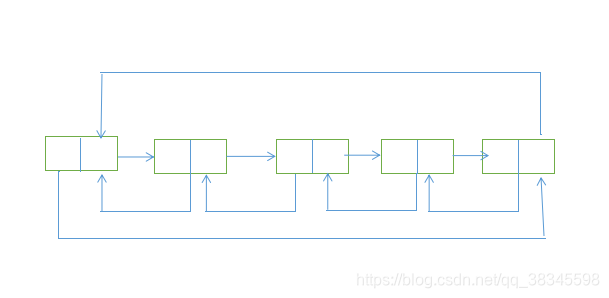一、大概含义
list实现了双向链表的数据结构,在链表的任一位置的元素进行插入、删除和查找都是极快速的。同时list的每一个节点有三个域:前驱元素指针域、数据域和后继元素指针域。要注意的是由于list对象的节点并不要求在一段连续的内存中,所以对于迭代器,只能通过++或者--的形式将迭代器移动到后继/前驱的节点元素的位置.

二、用法
(1)创建list对象
list<int>l;
//创建了一个空的链表
list<int>l(10);
//创建了具有10个元素的链表(2)元素的插入与遍历
#include<list>
#include<algorithm>
#include<string>
#include<iostream>
using namespace std;
int main()
{
list<int>l;
//在list对象的尾部插入数据
l.push_back(2);
l.push_back(1);
l.push_back(5);
//在list对象的头部插入元素
l.push_front(8);
list<int>::iterator it;
it=l.begin();
it++;
l.insert(it,20);//在第二个位置处插入元素
//使用insert函数在任一位置插入元素
for(it=l.begin();it!=l.end();it++)
{
cout<<*it<<endl;
}
//定义反向迭代器
cout<<"下面是反向迭代的结果"<<endl;
list<int>::reverse_iterator rit;
for(rit=l.rbegin();rit!=l.rend();rit++)
{
cout<<*rit<<endl;
}
return 0;
}(3)元素的删除
使用remove()方法删除链表中的元素,值相同的元素都会别删除
使用pop_front方法删除链表的首元素,pop_back()方法删除链表尾元素。
使用erase()方法删除迭代器位置上的元素
使用unique删除连续重复的元素
#include<list>
#include<algorithm>
#include<string>
#include<iostream>
using namespace std;
int main()
{
list<int>l;
//在list对象的尾部插入数据
l.push_back(2);
l.push_back(1);
l.push_back(5);
l.push_back(11);
l.push_back(32);
l.push_back(34);
l.push_back(1);
cout<<"下面是没有删除的元素"<<endl;
list<int>::iterator it;
for(it=l.begin();it!=l.end();it++)
{
cout<<*it<<endl;
}
l.remove(1);//删除所有元素等于1
l.pop_front();//删除队列头部元素
l.pop_back();//删除队尾元素
it=l.begin();
it++;//删除第二个元素
l.erase(it);//删除迭代器所指向的位置
cout<<"下面是剩余的元素"<<endl;
for(it=l.begin();it!=l.end();it++)
{
cout<<*it<<endl;
}
l.clear();//清空元素
return 0;
}(4)元素查找
通过find()函数在链表中查找元素,如果找到元素,返回的是该元素的迭代器的位置,如果没有找到,返回end()迭代器的位置。
#include<list>
#include<algorithm>
#include<string>
#include<iostream>
using namespace std;
int main()
{
list<int>l;
//在list对象的尾部插入数据
l.push_back(2);
l.push_back(1);
l.push_back(5);
l.push_back(11);
l.push_back(32);
l.push_back(34);
l.push_back(1);
list<int>::iterator it;
for(it=l.begin();it!=l.end();it++)
{
cout<<*it<<endl;
}
it=find(l.begin(),l.end(),32);//寻找32
if(it!=l.end())
{
cout<<"找到了"<<endl;
}
else
{
cout<<"没找到"<<endl;
}
return 0;
}